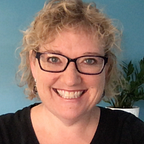Our hiring process, and our advice for future applicants
Our team at Trusting News just made our first hire in more than three years. (Welcome, Suzie Samin!) We were excited to add to our team of three, and we thought a lot about our hopes for the role and our selection process.
We were continually aware of the power dynamics of the hiring process, and our goal was to be as respectful and transparent as we could be. With that in mind, we told our pool of applicants we would share some observations and advice when the process was complete.
Our applicant pool
We received 93 applications for this job. The applicants represented quite a range of skill sets along two spectrums:
- journalism experience and knowledge about the news industry
- social media, marketing and communications experience
Some applicants were journalists without the social media expertise we were looking for, and some were communications professionals without experience or curiosity about the audience we serve at Trusting News. (More on that below.)
How we thought about Dimensions of Difference
This is the first time our small team has added a member since we co-created the Dimensions of Difference Hiring Guide with partner journalists. The guide helped us think through what perspectives we already have represented on our staff and what we would love to add to our shared outlooks and values.
We included an optional question in our job application outlining why “diversity in lived experiences, perspectives, knowledge, and ideas” is important to us and invited people to share anything they chose about their background and identity.
We also included questions in the process of interviews and reference checks about how applicants see the world, who they think is well served by journalism, and how likely they would be to challenge our team’s assumptions and culture. We believe culture should evolve when new members join a team.
We were thrilled with the Dimensions of Difference represented from those who chose to share information with us about their race, ethnic background, gender, sexual orientation and geography.
Our process
We learned from other highly praised hiring processes and adopted these practices:
- We held office hours for people to ask questions about the job (following the lead of Candice Fortman).
- We prioritized respectful communication and communicated quickly with people if they were not being brought forward (something emphasized in this great post from the Hearken team).
- We took the pool from 93 to 45 immediately and spent time scoring the remaining applications and portfolios. We brought eight people to the interview stage. We asked four to create example social media posts for us (and paid them for their time).
- We did not eliminate anyone based on their response (or lack of) to our question about Dimensions of Difference. We did keep in mind throughout the process how people would contribute to the makeup of our existing team of three white women, and six out of the eight highly qualified interviewees were people of color.
- We allowed a lot of time for this process. As the hiring manager, I spent 45 hours over six weeks designing the steps and creating the application, then screening and interviewing candidates. My two colleagues also invested considerable time in reviewing applications and conducting interviews. We could have moved more quickly and likely will next time, now that we have a process in place to follow. But we wanted to give applicants careful consideration, and we wanted the whole team to participate.
Some recommendations based on our team’s observations:
- Make sure to point to specific social media posts as examples of your work. Unfortunately, we saw a number of applicants who did not do this. If you work in social media, you need to be in the habit of saving screen grabs and links to posts you created. You also should save analytics reports and evidence of your strategy work. Old posts can be so hard to track down, we know. But we really do need to see evidence of what you can do. (And if you keep track of any shareable metrics that show the success of the social strategies you helped develop, even better!)
- If you’re applying for an audience-focused position, acknowledge that audience in your application materials. We were happy to receive interest from people who work outside of journalism, and we brought some non-journalists pretty far into our process. They advanced because they either shared some ideas of how Trusting News could reach journalists or demonstrated a process they’d go through to build those ideas. People whose experience was outside of journalism and did not show how they could help our team reach *our* audience did not advance.
- It almost goes without saying, but it’s always good to spend some time reviewing the website and any public-facing products of the organization you’re applying for. While in the hiring process you shouldn’t be expected to be proficient with all elements of an organization, we did want to see evidence that people had at least attempted to familiarize themselves with our social media channels and learn about our organization’s work and mission prior to applying.
At Trusting News, we learn how people decide what news to trust and turn that knowledge into actionable strategies for journalists. We train and empower journalists to take responsibility for demonstrating credibility and actively earning trust through transparency and engagement. We’re co-hosted by the Reynolds Journalism Institute and the American Press Institute. Subscribe to our Trust Tips newsletter. Follow us on Twitter and Facebook. Read more about our work at TrustingNews.org.
